




| Drassodes sp. (Westring, 1851) |





|
|
Scientific name: Drassodes sp. (Westring, 1851) Common name: French name: Order: Araneae Family: Gnaphosidae Size: Body size: Drassodes cupreus : 8 to 19 mm for males, 9 to 15 mm for females, Drassodes lapidosus : 6 to 13.5 mm for males, 9 to 15 mm for females, Drassodes pubescens : 6 to 7.5 mm for males, 5 to 9.5 mm for females. Biotope: Under stones or tree barks, often in dry habitat. Web: No web to catch preys. These nocturnal spiders are used to hiding during the day inside a silken retreat under stones or in other hidden places. Observation period: Geographic area: You can find spiders of this genus on all continents (except Antarctica of course). |
The spiders of the Gnaphosidae family are ground spiders with a nocturnal activity. You can tell them apart with their cylindrical and spaced spinnerets which are protruding beyond the abdomen tip and with their eye pattern where the posterior median eyes are very close to each other. The spiders of the Clubionidae family, which are rather similar, do not have so close posterior median eyes. These eyes are always round. The spiders of the Drassodes, Haplodrassus and Gnaphosa are characterized by the oval shape of these posterior median eyes which are very close to each other. You can tell apart spiders of the Gnaphosa genus with the position of their posterior eyes. They are located on a curve with the posterior lateral eyes rather at the back. The other genus show an almost straight row of posterior eyes. You can tell apart members of the Drassodes genus from members of the Haplodrassus genus with the presence of two spines on the upper side of tibiae IV. You can also tell apart the Drassodes genus with the presence of one notch on the trochanters, but an under side view is required. It is almost impossible to differentiate species of the Drassodes genus on pictures. In the Palaearctic region you may find Drassodes cupreus , Drassodes lapidosus , Drassodes pubescens, which are rather common in our Western Europe countries, and many other species. |
| [To know more about the Drassodes sp.] [Next picture] [Top] |
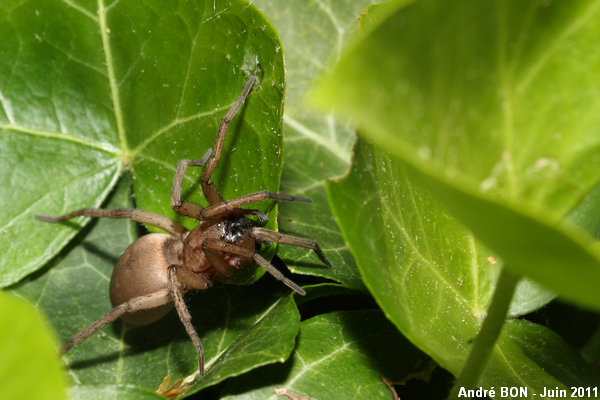
|
This rather large size spider has been disturbed in its diurnal retreat under ivy leaves. You cannot see the spinnerets but the posterior median eyes which are very close to each other and oval-shaped indicate one spider of the Gnaphosidae family and of the Drassodes or Haplodrassus genus. It seems to me that we can see two spines on the upper side of the tibiae of legs IV (pay attention that there is the patella between the femur and the tibia). So this is one spider of the Drassodes genus. |
| [To know more about the Drassodes sp.] [Next picture] [Previous picture] [Top] |
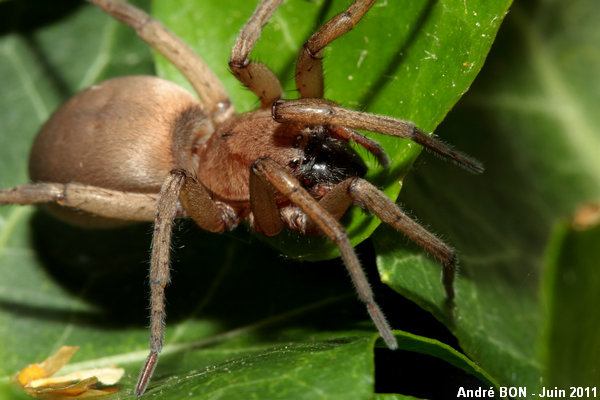
|
Though they are in shadow, you can clearly see the two posterior median eyes, oval-shaped and very close from each other. Because of the large size, there is a high probability that this one if of the Drassodes cupreus or Drassodes lapidosus species. |
| [To know more about the Drassodes sp.] [Next picture] [Previous picture] [Top] |
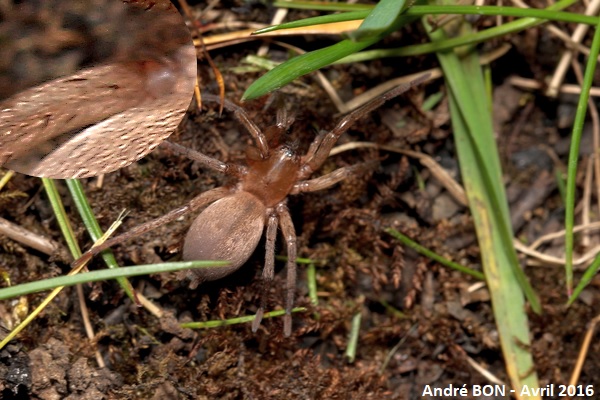
|
I found this spider under a stone. I shot many pictures in order to get the maximum information to identify the genus or even the species. I got only one picture on which you can see the upper side of the hind femurs (here the left hind femur). You can clearly see the two typical spines of the Drassodes genus (but you have to persevere to see them in natura). |
| [To know more about the Drassodes sp.] [Next picture] [Previous picture] [Top] |
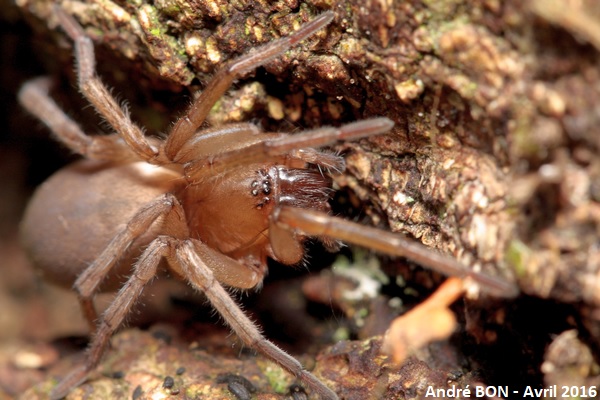
|
This picture shows the eye pattern with the posterior eyes almost aligned, the two median eyes being oval-shaped and close to each other. |
| [To know more about the Drassodes sp.] [Previous picture] [Top] |
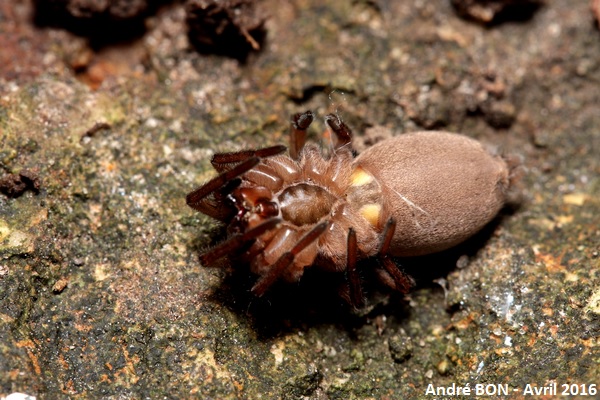
|
After lifting the stone this spider appeared upside down and so I could shot a picture of the under side. |